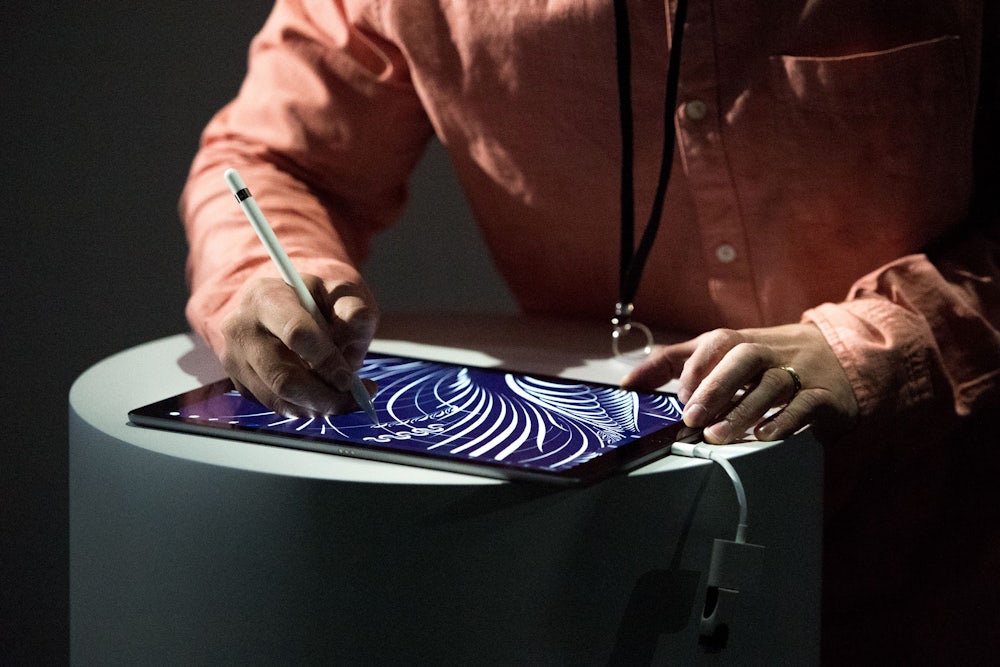What happened to the tablet? When the iPad arrived in 2010, it was hailed as the herald of a new tech category; it was to occupy every kitchen table, and nooks at coffee shops across the globe. But this week, when Apple announced its results for the quarter ending in December, iPad sales were down again: this time 25 percent year-over-year, following a pattern of decline that began in 2013. Overall tablet sales are no better; they fell over 12 percent in 2015.
This is almost certainly because large smartphones are killing tablets. If the purpose of a tablet is to have a larger screen to consume media with—to watch video, to read, to play games—big screen phones make the prospect of dropping a few hundred dollars on a tablet far less compelling.
Smartphones have evolved into a device far more useful and important than anyone thought they could be. Tablets, on the other hand, were meant to be the technological equivalent of paper. As the comedian Stephen Fry said of the iPad at its launch: “It is basically a highly responsive capacitive piece of glass ... Just as a book is basically paper bound together in a portable form factor.” Books, newspapers, and magazines, even things like grocery flyers—and, importantly, the industries behind them—were all going to find a new home on the device. The tablet economy would be a key node in a new media infrastructure; businesses would be saved, the great media bleed would be stanched, and we’d still sit down at home with our tablets propped up on our laps, watching them like TVs or reading them like newspapers.
The reality is: The future turned out differently. Tablet editions of newspapers have been shuttered because everyone wants news on their phones; showcase tablet apps like Flipboard switched to focus on the smartphone; and the tablet’s cultural significance has begun to evaporate—even Apple couldn’t make a splash with its new iPad Pro, which is about the size of a small laptop.
The belief that the tablet would replace paper but not change anything else was based on wishful thinking: the misguided idea that technological change replaces parts of the systems in our lives rather than changing systems themselves.
Consider publishing. As has been eloquently argued by John Herrman at The Awl, Facebook and other social media are now, essentially, the only places where news is delivered and found. The whole network of how media is distributed and delivered has changed—mostly in response to the smartphone. And other systemic changes are on the horizon. Self-driving cars, for example, could transform the idea of car ownership and how cities are organized. It’s not that a new kind of technology replaces a similar one. It’s that the entire relation changes.
It wasn’t a lack of vision that made the tablet a failure, so much as it was a consequence of the fact that it can be difficult to predict, here in the present, how flippant ideas can reshuffle entire industries. It would nonetheless be a mistake to say, as so many in the tech press are inclined to, that “the tablet is dead.” They’re still useful, and they birthed the emerging hybrid tablet market—those devices like Microsoft’s Surface, which function as both tablets and laptops, and will in all likelihood replace for the laptop for many. When that happens, or when it doesn’t and something else takes its place, we’ll again engage in a new network of relations. What happened to the tablet is what always happens in history. The tablet may not be dead, but the dreams that accompanied its arrival probably are.
